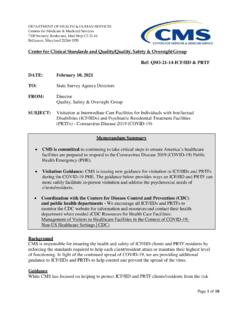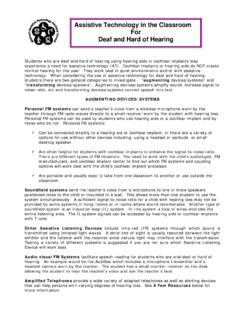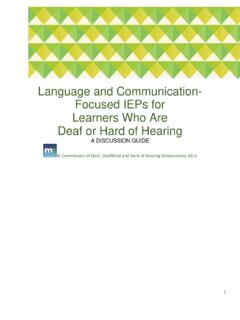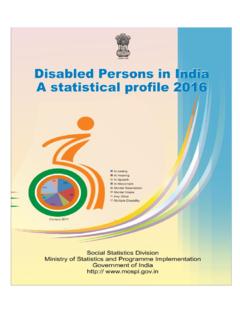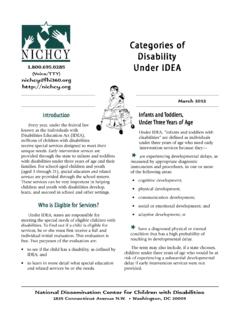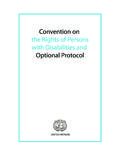Transcription of Sign Language 1 - Deaf Society
1 sign Language 1 2015 The deaf Society Updated: Version 2, July 2015 INSIGHTS INTO AUSLAN Handshapes used in Auslan (Adapted by Anne Horton from Australian sign Language : An introduction to sign Language linguistics by Johnston and Schembri) Our understanding of the intricacies of the handshapes used in signed languages is really just beginning. The human hand is able to make a vast array of possible shapes. Even so, sign Language tends to use only a limited number of handshapes to create the total number of signs used in a given sign Language . More systematic research is required before the exact number of handshapes needed to describe the signs of Auslan can be specified.
2 This is largely because of the complexity of the productive nature of signs (for example, the depicting signs) and the influence of other signed languages and their handshapes. At present, there are sixty-two handshapes listed in the Signs of Australia dictionary of Auslan (Johnston, 1998). Of these sixty-two handshapes, thirty-seven are the core handshapes used and the other twenty-five are seen as non-significant variations of these (the exception to this is with productive signing where small differences can represent a different and precise meaning). Some handshapes in Auslan are used much more often than others. This is seen in the 1998 edition of the Auslan dictionary where four of the handshapes are used for over 50 percent of all the signs.
3 These four most commonly used handshapes are pointing , flat hand with fingers together , flat hand with fingers apart and fist . The fifteen most frequent handshapes account for 80 percent of the signs in the 1998 Auslan dictionary. The next twenty-two handshapes account for the remaining 20 percent of signs. (Six of the handshapes occur in only 1 percent of all the Auslan signs in the Auslan dictionary!) The most obvious reasons for the differences in how much a handshape is used is that the signs in signed languages need to be clearly seen by other people (perception) and produced easily by the signer (production), allowing communication to occur quickly and efficiently.
4 Handout 1a sign Language 1 2015 The deaf Society Updated: Version 2, July 2015 INSIGHTS INTO AUSLAN Table of Handshapes used in Auslan (From The Survival Guide to AUSLAN by Johnston and Schembri, 2003) Handout 1b sign Language 1 2015 The deaf Society Updated: Version 2, July 2015 INSIGHTS INTO AUSLAN Established and Productive Signs (Adapted by Anne Horton from Australian sign Language : An introduction to sign Language linguistics by Johnston and Schembri) Established Signs These signs are frozen and form the basis of the vocabulary listed in dictionaries of Auslan. These signs are frequently used and highly standardized.
5 Productive Signs Productive signs make use of a much larger and more varied selection of locations and movements than established signs. These signs are actively created by signers as they put together combinations of meaningful units. This explains why these are called productive signs. These meaningful units can be used to extend or modify the meaning of established signs. Examples of meaningful units are: handshape, hand orientation, sign location and movement, nonmanual features, rate, stress, duration and repetition. (See Structure of Signs in Auslan Handout). Productive signs combine different meaningful units in different combinations as the need arises to produce signs that may have never been signed before but can be understood in a particular context.
6 This productive aspect of Auslan is fully integrated into everyday interactions between signers, but most noticeable during creative story-telling. In any given signed conversation there is most probably a significant number of signs which have been created or re-created on the spot as required by the topic or context of the discussion. Some productive signs may become standardized over time eg: MEET (two individuals approaching one another). The number of locations, movements and spatial arrangements of signs is potentially unlimited. Handout 2a sign Language 1 2015 The deaf Society Updated: Version 2, July 2015 INSIGHTS INTO AUSLAN Fingerspelling (Adapted by Anne Horton from Australian sign Language : An introduction to sign Language linguistics by Johnston and Schembri) Fingerspelling is using your hands to represent the letters of a writing system.
7 In English, this means using 26 different hand configurations to represent the 26 letters of the English alphabet. As such, fingerspelling is not a signed Language in and of itself, rather it is a manual code for representing the letters of the English alphabet. It appears that fingerspelling was first used by hearing people to represent the written form of spoken Language , however fingerspelling is now completely integrated into natural signing. When fingerspelling a word, the word is spelled out letter by letter. Fingerspelling is generally mixed in with signing and is especially used for spelling nouns (place names, people s names, objects names) or for spelling words that don t have a sign .
8 The only time fingerspelling might be exclusively used is in an educational setting such as the Rochester Method, or with deaf /blind people (or in very dark lighting conditions) whereby the letters are spelled onto the hand of the deaf /blind person. Fingerspelling can also be used even when there is a sign for the word. This is likely to happen when wanting to emphasise a word, to impress someone, or to hide meaning from an onlooker who can t read fingerspelling (such as a child). There is more than one fingerspelling code for the English alphabet used in Australia: By far the most widely known and used is the two-handed alphabet that has its origins in Britain Less widely known is the one-handed (Irish) alphabet that is gradually fazing out as the signing population ages (since it s discontinued use in education during 1875-1950 s).
9 The one-handed American alphabet on the other hand, is increasingly known by deaf Australians, especially younger people or those who travel overseas frequently, because of the prestige of ASL (American sign Language ) around the world. In the rapid fingerspelling of native signers of Auslan, not all the letters of a word are fingerspelled and the parts blend together, so it is often only the overall sign shape that is recognised, not the shapes of the individual letter signs themselves. Handout 2b sign Language 1 2015 The deaf Society Updated: Version 2, July 2015 INSIGHTS INTO AUSLAN Do s and Don ts for learning Auslan DO: Relax! Have fun!
10 Be flexible Leave any inhibitions at home (you need to become comfortable with using your body, especially making facial expressions. You will need to touch your body and face for many signs) Take risks (you ll probably make a few mistakes but that s okay) Make eye contact when communicating Get ready to co-ordinate visual, spatial and motor skills Aim for fluid movement so your signs will flow Copy the teacher (but don t mirror them) Use your memory to remember signs and where you have located objects in your signing space Keep your signs within the signing space in front of your body DON T: Assume Be patronising (you are no better than a deaf person just because you can hear) Exaggerate lip movements Imitate the sounds deaf people make Hide your eyes or look away when communicating Ask other students when you can t remember a sign (it s better to ask the teacher) Disagree with the teacher or correct their signing (you may have learnt a different sign or a variation of a sign from someone else consider this to be part of the rich diversity of Auslan).

